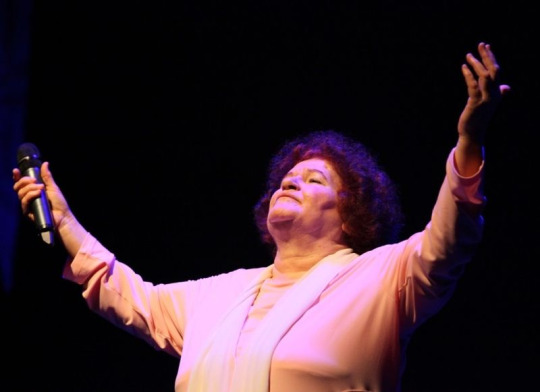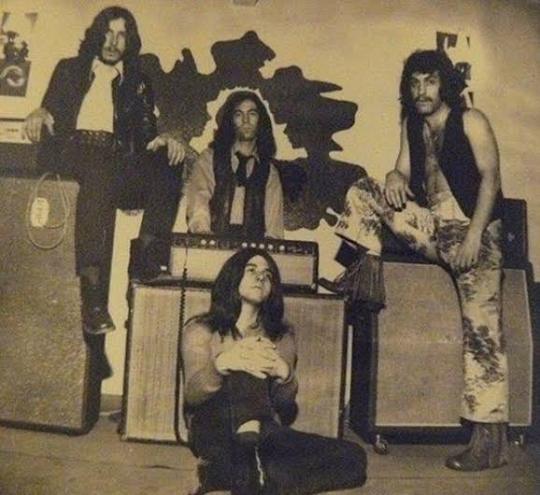#Anadolu Psychedelia
Explore tagged Tumblr posts
Text
MASTERS OF TURKISH PSYCHE: SELDA BAĞCAN

From being sampled by none other than Dr. Dre and Mos Def, getting Elijah Woods to his knees for an autograph to being arrested up to three times for her government questioning songs, Selda Bağcan, also known as the Queen of Psychedelic Folk Music, is a singer, songwriter, producer, and activist who has written some of the most iconic and memorable folk songs in all of Turkey.
With her music being released in the ’70s, a time wherein many political conflicts between the far-left and far-right, as well as the state against Islamist militant groups arose, Bağcan used her musical passion and talent to speak up about the tragedies and conflicts that were happening right under her home country.
Her songs contain strong criticisms against the happenings and social issues that were occurring at the time, as well as lyrics supporting the working class amongst many social issues.
Her versions of traditional Turkish folk songs are accompanied by her own strong voice, which many have come to love, as well as the baglama, an instrument that is often used in the genre.
By the time the ’80s had arrived, a coup de tat had occurred in Turkey, and Selda was persecuted and stripped of her passport by military officials due to her often if not almost politically-charged songs. Because of this, she was unable to join the WOMAD Foundation Festival.
In 1987 with help of the WOMAD Foundation, Bağcan was able to get her passport back and was then finally able to join the Festival.
Not long after this, she was able to start her European tour, which elevated her name and fame in Europe, eventually catching the attention of none other than American rapper Mos Def, who sampled one of her songs in his album The Ecstatic, “SuperMagic” to be exact.

Selda’s sound was not only adored by Mos Def — after discovering her sound on the album, Dr. Dre decided to put his own spin on Bağcan’s music by featuring the same sample used in Mos Def’s song in “Issues”, featuring Ice Cube, Anderson P.aak and Def Jointz in the album Compton: a Soundtrack (2015).
This spread her name and influences even wider into the world and many festivals, illegal sampling, lawsuits, interviews and international fame later, Selda Bağcan is a true legend and continues to inspire many people to this day.

youtube
#selda bağcan#Turkish psychedelic rock#Anadolu Psychedelia#anatolian#anatolian rock#Turkish folk music#Psyche#70s#Selda#Youtube
4 notes
·
View notes
Text
Değeri Bilinmeyen Bir Cevher, Hardal:

1960'lı, 70'li yıllar, tüm dünyanın The Rolling Stones ve The Beatles diye çalkalandığı o dönemlerde Burhan Ağaoğlu isimli bir müzik severin tutkusuyla başlıyor herşey. Bir kaç arkadaşına bir rock grubu kurma teklifinde teklifinde bulunuyor Burhan. Yeraltı Dörtlüsü'nün son dönem elemanlarından Sedat Avcı, Aydın Şencan ve döneminin en yetenekli gitaristlerinden olan Cahit Kukul'a gönderiyor teklifini. Sedat Avcı ise o sıralar grubu 25. Saat ile konserlere ve turnelere çıkmaktadır. Teklife sıcak bakan bu yetenekli müzisyenlerin vokal için teklif sunduğu o isim ise Şükrü Yüksel'den başkası değil. 1970'li yıllarda resmi olarak kurulan ve çalışmalara başlayan grup 70'lerin sonuna doğru arabesk müziğin popülerliği ile karşı karşıya kalıyor. Giderek daha az ilgi gören rock ve pop müzik camiasında ise 3 Hürel'in dağıldığı, Erkin Koray'ın yurt dışı seyahatine başladığı ve Barış Manço'nun albümlerinin eskisi kadar rağbet görmediği bir dönemde çıkıyor Hardal'ın ilk albümü. "Nasıl? Ne zaman?" isimli 1978 çıkışlı albüm çoğunlukla Şükrü Yüksel'in şarkılarının bulunduğu, Cahit Kukul'un da bestelerini barındıran mükemmel bir rock projesi olarak ilk çıkışını yapıyor. Başarıya ulaşan albümlerinin ardından grup televizyonlarda da sahne almaya başlıyor. 1980 yılında 12 Eylül darbesinin ardından ikinci albümlerinin kayıtlarına başlayan grup 1983 çıkışlı "Nereden Nereye!" isimli ikinci albümlerini çıkarıyor. Ülkede yaşanan siyasi olaylar ve mali durgunluk sebebiyle karamsarlığa düşen grup ara vermeye karar veriyor. 1994 yılında Cahit Kukul'un önderliğinde grup "Seçmeler" adında bir albüm yayınlıyor. 97'de tekrar bir araya gelen grup 1999'da "Yeniden Doğuş" isimli son albümlerini piyasaya sürüyor. Sedat Avcı'nın bir müddet daha Erkin Koray ile çalışmasından sonra vefat etmesi üzerine grup dağılıyor. "Nasıl? Ne zaman?" albümü kırk iki yıl sonra 17 Şubat 2020'de tekrar yayınlanmıştır. Türk rock tarihinin bu değerli çalışmaları için çok teşekkür ederiz. Cahit Kukul'un da dediği gibi; "Hardal bir lezzet, biz de müzikte bir lezzetiz!"
#rock#hardal#türkrock#türkçe rock#progresifrock#pink floyd#psikedelikrock#erkin koray#hardalband.#rocktarihi#60s psychedelia#barış manço#anadolu rock
14 notes
·
View notes
Link
Here is a Psych Playlist I made. Music that was born in these regions. Music itself does not have a nationality. Noura Mint Seymali is great. She sings and plays a small African Harp and is accompanied by a full band with a microtonal guitarist. You'll get an idea of where blues originated. I think music from africa tends to get overlooked.
#neo psychedelia rock#anadolu rock#anatolian rock#berbers#amazigh#psychadelic rock#microtonal music#blues#ancient music#70s#maqaam
3 notes
·
View notes
Audio
Gaye Su Akyol - Anadolu Ejderi - forging the next generation of Anatolian rock
This wildly acclaimed Istanbul-based artist, delivers an unforgettable 4th album Anadolu Ejderi (Anatolian Dragon). Building upon her mélange of Turkish psychedelia, empowered commentary and retro-futurist sonics, her vision is more personal and uncompromising than ever before. Courage. Bravery. Daring. Those are the watch words that guided Turkey’s Gaye Su Akyol when she was making Anadolu Ejderi, her first full-length release in four years. Already lauded for her startling, innovative mix of Turkish psychedelia and folk song, surf music and ʼ90s Western rock, a global sweet spot where Anatolian music heroine Selda Bağcan rubbed shoulders with Kurt Cobain, Akyol was ready to expand her vision after a relentless period on the road.
Click through for more extensive liner notes.
8 notes
·
View notes